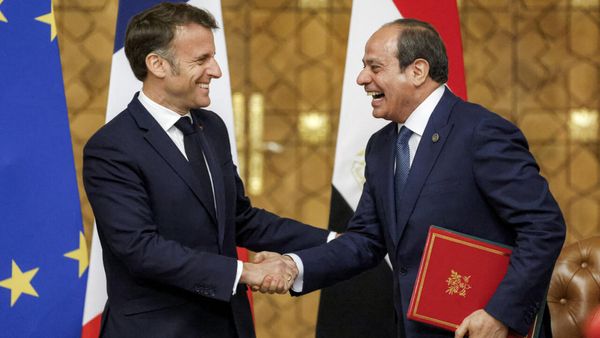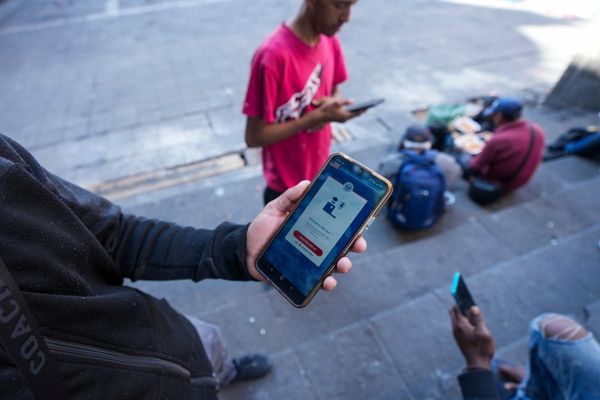
With TikTok prepared to go dark as soon as this weekend, many marketers seem poised to go all in on Meta.
Creators aren’t quite so sure.
Thoren Bradley, who has amassed more than 10 million TikTok followers for his woodchopping videos, has spent the last week encouraging people to boycott Meta in response to its lobbying efforts ahead of the bill’s passage last year. (Meta has denied supporting the TikTok divest-or-ban bill.)
Bradley isn’t alone. Videos of people turning off (and calling out) Meta’s data-sharing, tracking Meta’s fluctuating stock price, and deleting Facebook altogether have circulated online since the Supreme Court hearing about the TikTon divest-or-ban bill in early January. Even before that, Google searches for how to delete Facebook and Instagram accounts were on the rise following Meta’s announcement that it would end its third-party fact-checking program.
For creators who still plan on using Meta platforms, there’s some apprehension about audience-building and monetization options. TikToker Erica Mags, who has nearly 105,000 followers on the platform, said in one video that one of her videos didn’t get the same reception on Instagram Reels as it did on TikTok—so much so that she ended up deleting it.
“Don’t make us go over there,” she said in the TikTok. “The vibes are not the same.”
“TikTok’s algorithm just doesn’t exist anywhere else”
One cause for concern among creators is a belief that Meta doesn’t seem to deliver content to the right audiences. Elysia Berman, who has amassed more than 170,000 followers on TikTok, said she finds the Reels algorithm “much less exciting” as a viewer and less fruitful as a creator.
“Your videos are less likely to make it to the quote-unquote wrong side of TikTok because the algorithm is so specific…Whereas [on] Instagram, it gets pushed out to everyone,” she said. “A lot of times, you can have people that are commenting really hateful things just because they can.”
Others are worried about their ability to monetize. Maddy Mitchell, who has nearly half a million followers on TikTok, attributes her ability to make a living as a full-time creator to TikTok.
“Last year, a huge source of my income was merch for a very viral moment that I had on TikTok,” she said. “You just can never achieve that level of virality on any other platform.”
Berman, who said she was able to pay off a “staggering” amount of debt thanks to the TikTok Creator Fund, hasn’t monetized on Instagram despite building her following to 15,000, which she said is partially because creators don’t get paid for views on Instagram in the same way that some can on on TikTok. Mitchell, who has 250,000 Instagram followers, said that not only has she found it harder to reach new audiences on Instagram Reels, it’s also been a “headache” to monetize.
“There’s just no world in which [TikTok and Instagram] are comparable from a creator standpoint and from a consumer standpoint,” Mitchell said. “I have never sat down and just scrolled Instagram Reels—that’s never happened because it’s not a great user experience, in my opinion.”
Some creators said they worry that monetization could only grow harder if TikTok were to go away. “The only thing keeping Instagram honest right now is the outside pressure of trying to keep the users happy,” Bradley said. “If there’s no outside pressure, then they could give it a shit. They know you have nowhere else to go.”
Other creators have shared similar sentiments. “I’m really sorry to all of the influencers and content creators begging us to follow them on Instagram,” creator Marlee Loiben said in a recent TikTok. “Me following you on Instagram is not going to help because I’m not going to be fed your content.”
Where to next?
While Berman plans to continue using Instagram, that “doesn’t mean [she’s] not frustrated” with Meta, she said, and she expects to see a drop-off of Instagram users in the event of a TikTok ban.
So where are Meta-averse users and creators headed? This week, the Chinese app Xiaohongshu (also known as “RedNote”) became the No. 1 free app on the App Store in the US, but Bradley and Mitchell said they view the app’s surge in popularity as more of a statement than a viable long-term TikTok replacement.
Instead, many creators told us they view Google-owned YouTube as the next-best option. Mitchell said she plans to explore YouTube Shorts as an alternative, Berman said she’s looking into YouTube and Substack, and Bradley said he’ll focus on YouTube Shorts and Snapchat.
Bradley anticipates that some creators may go to Instagram, considering that YouTube videos often require more high-level production skills and that some small businesses rely on Facebook and Instagram to stay afloat.
If creators are faced with rebuilding their TikTok followings on other platforms, there’s another question of how much change is too much to bear. Berman said she wonders whether she’ll be able to regain a similar-sized following, while Bradley said he views his willingness to make major platform switches as finite.
“I don’t know how many more times we can all go through this before people are just like, ‘Man, social media is just a mess right now. I’m gonna go outside and touch the grass,’” he said.
This report was originally published by Marketing Brew.







